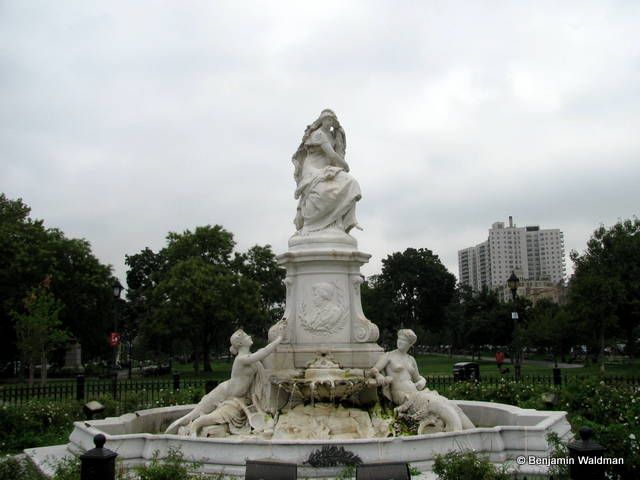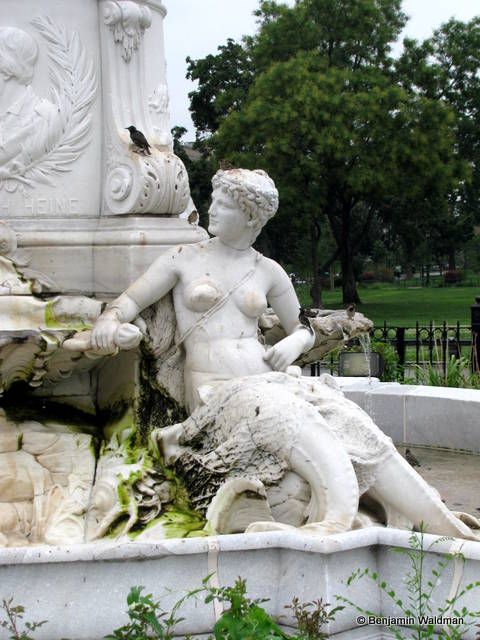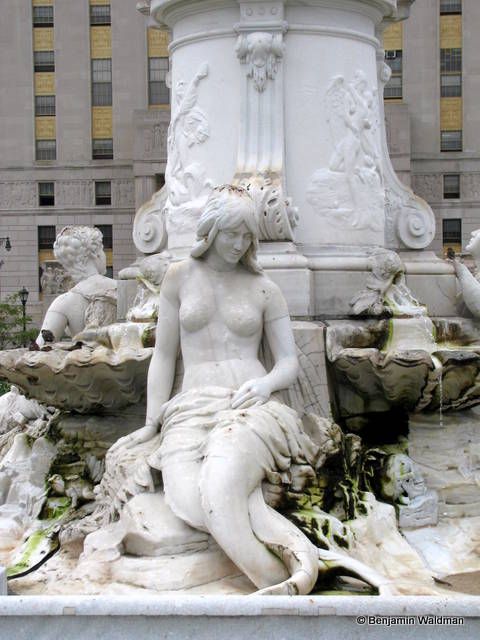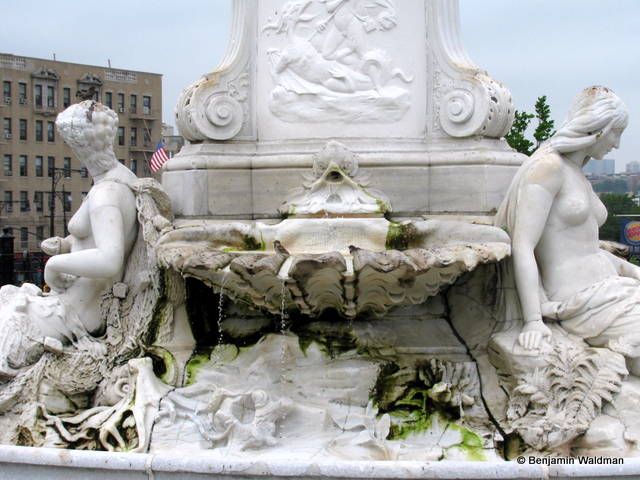Last-Minute NYC Holiday Gift Guide 🎁
We’ve created a holiday gift guide with presents for the intrepid New Yorker that should arrive just in time—


A turn of the century postcard shows the Heinrich Heine Fountain, which is located in Joyce Kilmer Park in the Bronx. The Fountain traveled across a bumpy road, traversing two continents, before reaching its final destination in New York. It is part of a collection of curiosities that have been transplanted to the city, each with their own story to tell. Christian Johann Heinrich Heine was a nineteenth-century German poet whose most famous composition was “Die Lorelei.” “Die Lorelei,” which is German for siren or mermaid, tells the story of sailors who, distracted by the Lorelei’s singing, crash their vessels upon the rocks.
In 1888, Ernst Herter was commissioned to design a fountain in memory of Heine to be placed in his hometown of Dusseldorf. The fountain was backed by the German literati and received financial assistance from Elisabeth of Bavaria, the Empress of Austria. Unfortunately, the fountain did not have the support of the citizens of Dusseldorf, and they would not let it be placed in their city. According to a New York Times article from 1893, the citizens refused the fountain primarily because of their “dislike of the Jews, which in some Germans amounts to a mania and causes frequent outbreaks of Judenhetze [Jew baiting].” The Fountain was then offered to the City of Mayence, which also declined to accept it.
As a result, in 1893 the fountain was purchased by the Arion Society of New York, a German singing group. According to The New York Times, “[t]he fountain is not, indeed a great work of art, but as a symbol that America will not accept from the old country its prejudices of race it has its own value.” Lamentably, this value did not guarantee the fountain a smooth immigration to New York City. The New York City Parks Department mandated that the National Sculpture Society approve all monuments before they could be acquired by the City. On April 4, 1895, the Heine Fountain had its day before the National Sculpture Society. However, the Fountain was not approved by the Society because of its “alleged artistic deficiencies.” It is possible that the Fountain was actually rejected because the its advocates wanted it to be placed on 5th Avenue and 59th Street.

In 1896, the Fountain was offered to Baltimore, a potential fourth home for the orphaned fountain. Thankfully, it was destined to remain in New York City. That same year, Tammany Hall politicians convinced the Board of Aldermen to accept the Heine Fountain, though its final resting place remained uncertain. It took until 1899 for the Fountain to find a permanent home, eleven years after Herter had been commissioned to design the memorial. On July 8, 1889, in a simple ceremony, the Heine Fountain was unveiled near 161st Street and the Grand Concourse in the Bronx and has remained there ever since. In the 1980s, the fountain, like many other works of public art in the city, fell into disrepair and needed over $275,000 worth of repairs. Other, more famous orphaned works, were quickly adopted. It took over ten years before the the Heine Fountain finally found a savior. Today, thanks to the Municipal Arts Society’s adopt-a-monument program, the fountain has been restored and can once again be enjoyed in all of its beauty.



I cannot determine the meaning
Of sorrow that fills my breast:
A fable of old, through it streaming,
Allows my mind no rest.
The air is cool in the gloaming
And gently flows the Rhine.
The crest of the mountain is gleaming
In fading rays of sunshine.
The loveliest maiden is sitting
Up there, so wondrously fair;
Her golden jewelry is glist’ning;
She combs her golden hair.
She combs with a gilded comb, preening,
And sings a song, passing time.
It has a most wondrous, appealing
And pow’rful melodic rhyme.
The boatman aboard his small skiff, –
Enraptured with a wild ache,
Has no eye for the jagged cliff, –
His thoughts on the heights fear forsake.
I think that the waves will devour
Both boat and man, by and by,
And that, with her dulcet-voiced power
Was done by the Loreley.
Christian Johann Heinrich Heine
Translator: Frank Petersohn
Subscribe to our newsletter